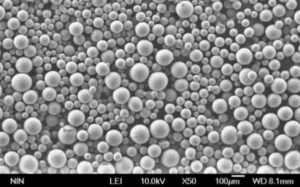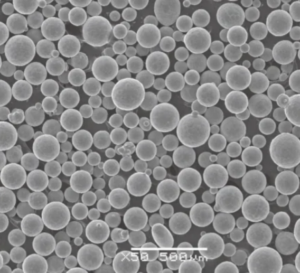مساحيق المعادن الحرارية جزء رائع وأساسي من علوم المواد الحديثة، حيث تلعب دورًا حاسمًا في مختلف الصناعات عالية التقنية. تُعرف هذه المواد بمقاومتها الاستثنائية للحرارة والتآكل، مما يجعلها لا تقدر بثمن في التطبيقات الصعبة. في هذا الدليل الشامل، سنتعمق في عالم مساحيق المعادن المقاومة للحرارة، ونستكشف أنواعها وتركيباتها وخصائصها وتطبيقاتها وغير ذلك الكثير.
نظرة عامة على مساحيق المعادن المقاومة للحرارة
تُشتق مساحيق المعادن المقاومة للحرارة من العناصر التي تتمتع بنقاط انصهار عالية بشكل استثنائي ومقاومة للتآكل والتآكل والتشوه. تشمل هذه المعادن التنغستن والموليبدينوم والتنتالوم والنيوبيوم والرينيوم. يتم استخدامها في البيئات التي تتطلب مواد قادرة على تحمل الظروف القاسية، مثل الفضاء والمفاعلات النووية والأفران ذات درجة الحرارة العالية.
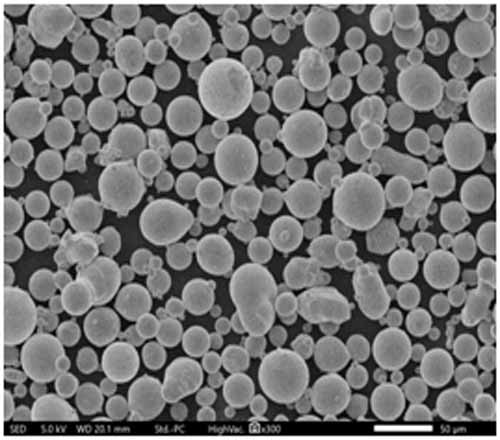
أنواع مساحيق المعادن المقاومة للحرارة
لفهم مساحيق المعادن المقاومة للحرارة بشكل كامل، دعنا نلقي نظرة فاحصة على بعض الأنواع المحددة وخصائصها الفريدة:
| معدن | الوصف |
|---|---|
| التنجستن (W) | تُعرف بأعلى نقطة انصهار وكثافة، وهي مثالية للتطبيقات ذات درجة الحرارة العالية. |
| الموليبدينوم (Mo) | توصيل حراري ممتاز وتمدد حراري منخفض، يستخدم في الإلكترونيات والإضاءة. |
| التنتالوم (Ta) | مقاومة عالية للتآكل، تستخدم في الأجهزة الطبية ومعدات المعالجة الكيميائية. |
| النيوبيوم (Nb) | ليونة عالية وتوصيل فائق، تستخدم في السبائك الفائقة والإلكترونيات. |
| الرينيوم (Re) | نقطة انصهار عالية وخصائص كهربائية فريدة، تستخدم في محركات الطائرات والإلكترونيات. |
| الزركونيوم (Zr) | مقاومة ممتازة للتآكل والقوة، تستخدم في المفاعلات النووية والزرعات الطبية. |
| الهفنيوم (Hf) | امتصاص عالي للنيوترونات، يستخدم في المفاعلات النووية ومكونات الفضاء. |
| الفاناديوم (V) | قوة جيدة ومقاومة للحرارة، تستخدم في السبائك الفائقة والأدوات. |
| الكروم (Cr) | صلابة ممتازة ومقاومة للتآكل، تستخدم في الطلاء والسبائك الفائقة. |
| التيتانيوم (Ti) | نسبة قوة إلى وزن عالية، تستخدم في الفضاء والطب والتطبيقات الصناعية. |
تكوين مساحيق المعادن الحرارية
يعد تكوين مساحيق المعادن المقاومة للحرارة أمرًا بالغ الأهمية لأدائها. غالبًا ما يتم دمج هذه المعادن مع عناصر أخرى لتعزيز خصائص معينة:
| معدن | التركيب | الخصائص المحسنة |
|---|---|---|
| التنغستن | نقي أو ممزوج بالنيكل أو الحديد أو النحاس | تحسين قابلية التشغيل الآلي والقوة. |
| الموليبدينوم | نقي أو ممزوج بالتيتانيوم أو الزركونيوم أو الكربون | تحسين مقاومة الزحف والقوة. |
| التنتالوم | نقي أو ممزوج بالتنغستن أو الهافنيوم | تعزيز مقاومة التآكل والقوة. |
| النيوبيوم | نقي أو ممزوج بالتيتانيوم أو الألومنيوم | تحسين التوصيل الفائق والقوة. |
| الرينيوم | نقي أو ممزوج بالموليبدينوم أو التنغستن | تحسين الثبات الحراري والقوة. |
خصائص مساحيق المعادن المقاومة للحرارة
تُظهر مساحيق المعادن المقاومة للحرارة خصائص فريدة تجعلها مناسبة للتطبيقات عالية الأداء:
- نقاط الانصهار العالية: ضرورية للتطبيقات التي تنطوي على حرارة شديدة.
- صلابة استثنائية: توفر المتانة ومقاومة التآكل.
- كثافة عالية: تساهم في القوة والاستقرار تحت الضغط.
- مقاومة التآكل: تضمن طول العمر في البيئات القاسية.
- توصيل حراري وكهربائي جيد: مهم للإلكترونيات والتطبيقات ذات درجة الحرارة العالية.
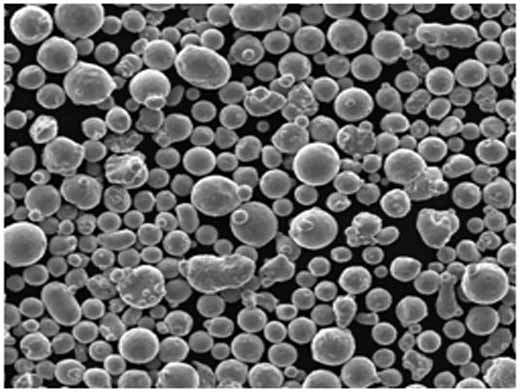
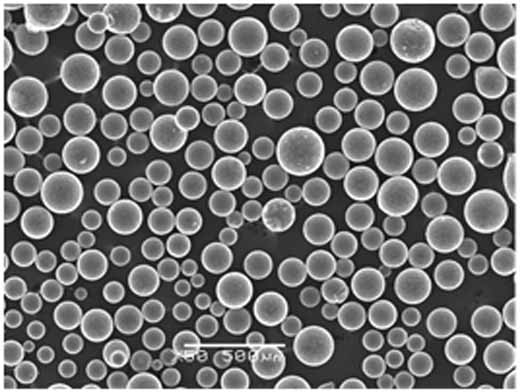
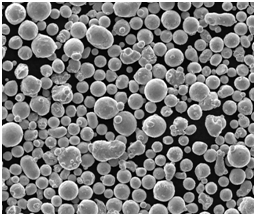
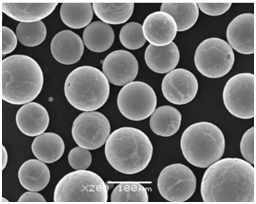
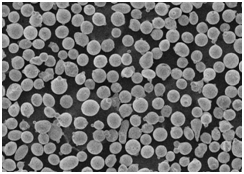
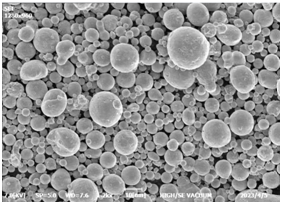
تطبيقات مساحيق المعادن المقاومة للحرارة
تُستخدم مساحيق المعادن المقاومة للحرارة في مختلف الصناعات نظرًا لخصائصها الرائعة:
| الصناعة | طلب |
|---|---|
| الفضاء | مكونات محركات الطائرات، فوهات الصواريخ، الدروع الحرارية. |
| الإلكترونيات | أجهزة أشباه الموصلات، الخيوط، جهات الاتصال. |
| الطبية | الأدوات الجراحية، الغرسات، أجهزة الأسنان. |
| نووي | مكونات المفاعل، التدريع الإشعاعي، تكسية الوقود. |
| المعالجة الكيميائية | المعدات المقاومة للتآكل، المحفزات، أوعية التفاعل. |
| صناعي | أدوات القطع، القوالب، القوالب، الطلاء المقاوم للتآكل. |
المواصفات والمقاسات والدرجات والمعايير
يعد فهم مواصفات ومعايير مساحيق المعادن المقاومة للحرارة أمرًا بالغ الأهمية لتطبيقها:
| معدن | الأحجام (ميكرونات) | درجات | المعايير |
|---|---|---|---|
| التنغستن | 1-100 | W1, W2, W3 | ASTM B777, ISO 4497 |
| الموليبدينوم | 1-50 | Mo1, Mo2, TZM | ASTM B386, ISO 5755 |
| التنتالوم | 1-40 | Ta1, Ta2 | ASTM B708, ISO 13782 |
| النيوبيوم | 1-60 | Nb1, Nb2, Nb3 | ASTM B393, ISO 13782 |
| الرينيوم | 1-20 | Re1, Re2 | ASTM B708, ISO 13782 |
تفاصيل الموردين والأسعار
يعد العثور على موردين موثوقين وفهم التسعير أمرًا ضروريًا للمشتريات:
| المورد | معدن | السعر (بالكيلوغرام) | معلومات الاتصال |
|---|---|---|---|
| Global Tungsten | التنغستن | $250 | [email protected] |
| Midwest Molybdenum | الموليبدينوم | $150 | [email protected] |
| Tantalum Supply | التنتالوم | $300 | [email protected] |
| Niobium Sources | النيوبيوم | $200 | [email protected] |
| Rhenium Rare | الرينيوم | $400 | [email protected] |
مزايا وقيود مساحيق المعادن المقاومة للحرارة
في حين أن مساحيق المعادن المقاومة للحرارة تقدم العديد من الفوائد، إلا أنها تأتي أيضًا مع بعض القيود:
| مزايا | محددات |
|---|---|
| مقاومة درجات الحرارة العالية | تكلفة عالية |
| قوة ميكانيكية ممتازة | يصعب تشغيلها آلياً |
| مقاومة فائقة للتآكل | التوفر محدود |
| توصيل كهربائي وحراري جيد | ثقيلة وكثيفة |
| تدوم طويلاً ومتينة | مخاطر صحية محتملة أثناء التعامل |
مقارنة مساحيق المعادن المقاومة للحرارة
عند الاختيار بين مساحيق المعادن المقاومة للحرارة المختلفة، من المهم مقارنة خصائصها ومدى ملاءمتها لتطبيقات معينة:
| معدن | درجة الانصهار (درجة مئوية) | الكثافة (جم/سم مكعب) | مقاومة التآكل | الموصلية الحرارية (وات/م كلفن) | التطبيقات |
|---|---|---|---|---|---|
| التنغستن | 3422 | 19.25 | ممتاز | 173 | الفضاء، الإلكترونيات، الإضاءة |
| الموليبدينوم | 2623 | 10.28 | جيد | 138 | الإلكترونيات، صهر الزجاج، الإضاءة |
| التنتالوم | 3017 | 16.65 | متفوقة | 57 | الأجهزة الطبية، المعالجة الكيميائية |
| النيوبيوم | 2477 | 8.57 | جيد | 54 | السبائك الفائقة، الإلكترونيات، الطبية |
| الرينيوم | 3186 | 21.02 | ممتاز | 48 | محركات الطائرات، الإلكترونيات، الكيميائية |
تحليل تفصيلي لمحدد مساحيق المعادن الحرارية
الآن، دعنا نتعمق أكثر في تفاصيل بعض مساحيق المعادن المقاومة للحرارة الرئيسية، مع تسليط الضوء على خصائصها الفريدة وتطبيقاتها وفوائدها.
مسحوق التنجستن
يشتهر مسحوق التنغستن بنقطة انصهاره وكثافته العالية بشكل لا يصدق. هذا يجعله مثاليًا للتطبيقات التي تتطلب مواد لتحمل درجات الحرارة القصوى والإجهاد الميكانيكي. يستخدم التنغستن بشكل شائع في صناعة الطيران لمكونات محركات الطائرات، وفي الإلكترونيات للخيوط، وفي الأجهزة الطبية للتدريع الإشعاعي.
مسحوق الموليبدينوم
يُعرف مسحوق الموليبدينوم بتوصيله الحراري الممتاز وتمدده الحراري المنخفض. هذه الخصائص تجعله مناسبًا للتطبيقات في الإلكترونيات، مثل المصارف الحرارية وأجهزة الترانزستور، وكذلك في صناعات الإضاءة وصهر الزجاج. تعد قدرة الموليبدينوم على الحفاظ على القوة في درجات الحرارة المرتفعة ميزة رئيسية.
مسحوق التنتالوم
يبرز مسحوق التنتالوم لمقاومته الفائقة للتآكل. هذا يجعله ذا قيمة في المعالجة الكيميائية والتطبيقات الطبية. غالبًا ما يستخدم التنتالوم في الأدوات الجراحية والغرسات وفي المعدات التي تتعامل مع المواد شديدة التآكل. تضمن قدرته على مقاومة التآكل طول العمر والموثوقية.
مسحوق النيوبيوم
يشتهر مسحوق النيوبيوم بليونته العالية والتوصيل الفائق. هذا يجعله مكونًا أساسيًا في السبائك الفائقة المستخدمة في الفضاء والإلكترونيات. تُستخدم خصائص التوصيل الفائق للنيوبيوم في أجهزة التصوير الطبي ومسرعات الجسيمات، حيث يكون الحفاظ على درجات الحرارة المنخفضة والأداء الفعال أمرًا بالغ الأهمية.
مسحوق الرينيوم
يُقدر مسحوق الرينيوم لنقطة انصهاره العالية وخصائصه الكهربائية الفريدة. يتم استخدامه في محركات التوربينات والإلكترونيات ذات درجة الحرارة العالية التي تتطلب مواد قادرة على تحمل الظروف القاسية. إن الثبات الحراري والقوة الاستثنائيين للرينيوم يجعله مادة حاسمة في البيئات الصعبة.
تحليل مقارن: التنغستن مقابل الموليبدينوم
عند مقارنة التنغستن بالموليبدينوم، يوفر كلا المعدنين مقاومة لدرجات الحرارة العالية، ولكن نقطة انصهار التنغستن الأعلى (3422 درجة مئوية مقابل 2623 درجة مئوية) تمنحه ميزة في تطبيقات درجات الحرارة الفائقة. ومع ذلك، فإن التوصيل الحراري الفائق للموليبدينوم وكثافته المنخفضة تجعله خيارًا أفضل للتطبيقات التي تتطلب تبديدًا فعالاً للحرارة ووزنًا أخف.
تحليل مقارن: التنتالوم مقابل النيوبيوم
يتفوق كل من التنتالوم والنيوبيوم في مقاومة التآكل، لكن كثافة التنتالوم الأعلى (16.65 جم/سم³ مقابل 8.57 جم/سم³) تجعله أكثر ملاءمة للتطبيقات التي يكون فيها الوزن أقل أهمية، وتكون أقصى مقاومة للتآكل مطلوبة. ومع ذلك، فإن ليونة النيوبيوم العالية والتوصيل الفائق تجعله الخيار المفضل للإلكترونيات المتقدمة وتطبيقات الفضاء.
تحليل مقارن: الرينيوم مقابل التنغستن
يستخدم كل من الرينيوم والتنغستن في التطبيقات ذات درجة الحرارة العالية، ولكن الخصائص الكهربائية الفريدة للرينيوم ونقطة السعر الأعلى تج
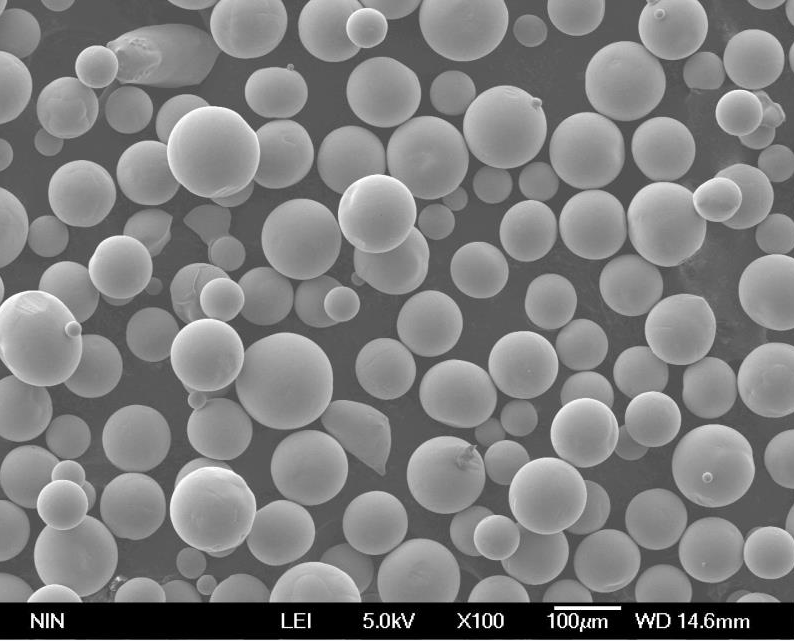
التعليمات
| سؤال | الإجابة |
|---|---|
| ما هي مساحيق المعادن المقاومة للحرارة؟ | مساحيق المعادن المقاومة للحرارة هي مواد ذات نقاط انصهار عالية ومقاومة استثنائية للحرارة والتآكل والتآكل. |
| ما هي بعض التطبيقات الشائعة لمساحيق المعادن المقاومة للحرارة؟ | تُستخدم في صناعات الفضاء والإلكترونيات والأجهزة الطبية والمفاعلات النووية ومعدات المعالجة الكيميائية. |
| كيف يتم إنتاج مساحيق المعادن المقاومة للحرارة؟ | يتم إنتاجها عادةً من خلال عمليات مثل السبائك الميكانيكية، والترسيب الكيميائي للبخار، واختزال أكاسيد المعادن. |
| ما هي الخصائص الرئيسية لمسحوق التنغستن؟ | يُعرف مسحوق التنغستن بنقطة انصهاره العالية وكثافته وقوته، مما يجعله مثاليًا للتطبيقات ذات درجات الحرارة العالية. |
| لماذا يستخدم مسحوق الموليبدينوم في الإلكترونيات؟ | يتمتع مسحوق الموليبدينوم بتوصيل حراري ممتاز وتمدد حراري منخفض، مما يجعله مناسبًا للمصارف الحرارية والمكونات الإلكترونية. |
| ما الذي يجعل مسحوق التنتالوم مقاومًا للتآكل؟ | يحتوي مسحوق التنتالوم على طبقة أكسيد واقية تقاوم التآكل، حتى في البيئات الكيميائية القاسية. |
| كيف يستخدم مسحوق النيوبيوم في تطبيقات الفضاء؟ | يستخدم مسحوق النيوبيوم في السبائك الفائقة لمحركات الطائرات وغيرها من مكونات الفضاء عالية الأداء نظرًا لقوته العالية وقابليته للطرق. |
| ما هي فوائد استخدام مسحوق الرينيوم في الإلكترونيات؟ | يوفر مسحوق الرينيوم خصائص كهربائية فريدة وثباتًا حراريًا عاليًا، مما يجعله مثاليًا للمكونات الإلكترونية عالية الأداء. |
| هل هناك مخاطر صحية مرتبطة بالتعامل مع مساحيق المعادن المقاومة للحرارة؟ | نعم، يمكن أن تشكل بعض مساحيق المعادن المقاومة للحرارة مخاطر صحية إذا تم استنشاقها أو ابتلاعها. يجب اتخاذ تدابير السلامة المناسبة أثناء التعامل والمعالجة. |
| من أين يمكنني شراء مساحيق المعادن المقاومة للحرارة؟ | يمكن شراء مساحيق المعادن المقاومة للحرارة من موردين متخصصين مثل Global Tungsten و Midwest Molybdenum و Tantalum Supply و Niobium Sources و Rhenium Rare. |
خاتمة
يعتمد اختيار مسحوق المعدن المقاوم للحرارة المناسب على المتطلبات المحددة لتطبيقك. ضع في اعتبارك عوامل مثل نقطة الانصهار، والتوصيل الحراري، ومقاومة التآكل، والكثافة، والتكلفة. ستساعدك معرفة هذه الخصائص على اتخاذ قرار مستنير وضمان نجاح مشروعك.
